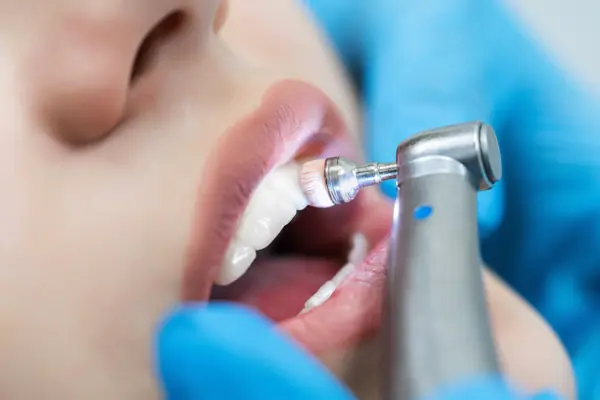Fluoride treatments are a cornerstone of preventive dentistry, playing a crucial role in the maintenance of oral health by strengthening tooth enamel and fighting tooth decay.
This comprehensive buyer’s guide, created for Palmetto Family and Cosmetic Dentistry patients, aims to delve deep into the world of fluoride treatments. From understanding what fluoride treatments entail to exploring their benefits and knowing what to expect during and after treatment, this guide provides all the information you need to make an informed decision about incorporating fluoride treatments into your dental care routine.
Understanding Fluoride Treatments
Fluoride is a mineral that occurs naturally and has an important role in the development of strong teeth and the prevention of cavities. It supports healthy tooth enamel and fights the bacteria that harm teeth and gums.
Fluoride treatments, applied in as opposed to a gel, foam, or varnish, which contain a significantly lower amount of fluoride than the amount found in toothpaste, mouthwashes, and tap water. A dentist can apply these treatments at Palmetto Family and Cosmetic Dentistry, which are quick and effective methods to boost oral health.
The Benefits of Fluoride Treatments
- Cavity Prevention: Fluoride is essential in preventing cavities and can even reverse early signs of decay.
- Enamel Strengthening: By replenishing lost calcium and phosphorus, fluoride treatments help to remineralize enamel on the teeth, which makes it more resistant to acid assaults from germs that are found on plaque and sugars in the mouth.
- Cost-Effective: Investing in fluoride treatments can save money in the long run by preventing cavities and other dental issues that might require more expensive treatments.
- Suitable for All Ages: While especially beneficial for children and teenagers, fluoride treatments are also advantageous for adults, particularly those at risk of dental decay.
Who Should Consider Fluoride Treatments?
Fluoride treatments are not just for children; many adults can benefit significantly from them. They are particularly recommended for individuals with:
- A history of frequent cavities.
- Dry mouth conditions, such as a lack of saliva, make it harder to inhibit decay.
- Gum disease, which can expose more of your tooth and tooth roots to bacteria.
- The presence of crowns, bridges, or braces may put teeth at risk of decay.
The Fluoride Treatment Process
Fluoride treatment is a standard dental procedure to strengthen tooth enamel and prevent decay. Here’s an overview of the fluoride treatment process:
Preparation: The fluoride treatment process typically begins with the dentist or dental hygienist reviewing your dental history and discussing any concerns you may have about your oral health. They may also briefly examine your teeth to assess their current condition.
Cleaning: Before applying fluoride, the dental professional thoroughly cleans your teeth to remove plaque or debris. This ensures that the fluoride can penetrate the enamel effectively and provide maximum protection against decay.
Protection: In some cases, the dental professional may apply a protective barrier, such as a dental dam or gel, to protect your gums and other soft tissues from the fluoride solution. This helps prevent irritation or discomfort during the treatment.
Application of Fluoride: The fluoride treatment will be applied once your teeth are clean and protected. There are several methods for using fluoride, including:
- Topical Fluoride Gel or Foam: The most common method involves applying a fluoride gel or foam directly onto the teeth by the use of a brush or a tray. The gel or foam is left on the teeth for a specified period, allowing the fluoride to penetrate the enamel and strengthen the tooth structure.
- Fluoride Varnish: Another method involves using a brush to paint a fluoride varnish onto the teeth. The varnish quickly hardens upon contact with saliva, forming a protective coating over the teeth that gradually releases fluoride over time.
- Fluoride Rinse: Sometimes, a fluoride rinse may be used, where you swish a fluoride solution around your mouth briefly before spitting it out. This method is often used for children with difficulty using trays or brushes.
Post-Treatment Instructions: After the fluoride treatment is complete, it is the responsibility of the dental expert to provide guidance on how to care for your teeth to maximize the benefits of the treatment. Among these options is the abstinence from food and drink for a predetermined amount of time and refraining from brushing or flossing for several hours to allow the fluoride to fully absorb into the enamel.
Follow-Up Visits: Depending on your risk of tooth decay and other factors, your dentist may recommend regular fluoride treatments as part of your preventive dental care plan. This could involve scheduling periodic appointments for in-office fluoride treatments or using prescription fluoride products at home.
A fluoride treatment is a straightforward and efficient method for enhancing the tooth enamel and warding off tooth decay. Following the recommended treatment schedule and practicing your teeth can be preserved with the help of appropriate oral hygiene routines. healthy and strong for years to come.
Aftercare and Maintenance
Post-treatment care for fluoride applications is minimal but important:
- Eating and Drinking: Follow your dentist’s instructions regarding eating and drinking restrictions immediately after treatment.
- Oral Hygiene: Continue with your regular brushing and flossing routine, using a fluoride-containing toothpaste to maintain oral health.
- Regular Dental Visits: Maintain regular check-ups and cleanings at Palmetto Family and Cosmetic Dentistry to monitor your oral health and adjust preventive care as necessary.
Risks and Considerations
Fluoride treatments are considered safe and effective for most individuals. However, it’s essential to use fluoride products as directed and keep high-concentration fluoride treatments out of the reach of children. Excessive fluoride can lead to dental fluorosis (mostly cosmetic white spots on teeth) in children under the age of 8, whose permanent teeth are still forming.
Cost and Insurance Coverage
The cost of fluoride treatments is relatively modest, especially when considering the cost-saving potential of preventing cavities and more serious dental issues. Many dental insurance plans cover fluoride treatments for children and adults, recognizing their preventive benefits. Palmetto Family and Cosmetic Dentistry offers transparent pricing and can assist with insurance verification and exploring payment options to ensure treatments are accessible.
Choosing Palmetto Family and Cosmetic Dentistry for Fluoride Treatments
Selecting the right dental practice for fluoride treatments is crucial for achieving the best outcomes. Palmetto Family and Cosmetic Dentistry is committed to providing:
- Expert Care: Our experienced dental professionals are skilled in delivering effective fluoride treatments tailored to each patient’s needs.
- Patient Education: We believe in empowering our patients with knowledge about their oral health and preventive care options.
- Comfortable Environment: Understanding that dental visits can be anxiety-inducing for some, we strive to create a welcoming and comfortable atmosphere.
- Comprehensive Dental Services: Beyond fluoride treatments, we offer a full range of dental services to address all aspects of your oral health.
Fluoride treatments represent a simple yet powerful tool in the pursuit of optimal oral health. Fluoride treatments offer a proven solution whether you want to protect your teeth against decay, strengthen enamel, or ensure your children’s teeth have the best start in life.
At Palmetto Family and Cosmetic Dentistry, our goal is to provide each patient with personalized care that addresses immediate dental concerns and lays the foundation for a lifetime of healthy smiles.
By incorporating fluoride treatments into your dental care regimen, you’re taking a significant step towards preserving your oral health and enhancing the natural beauty of your smile. Contact us now!

